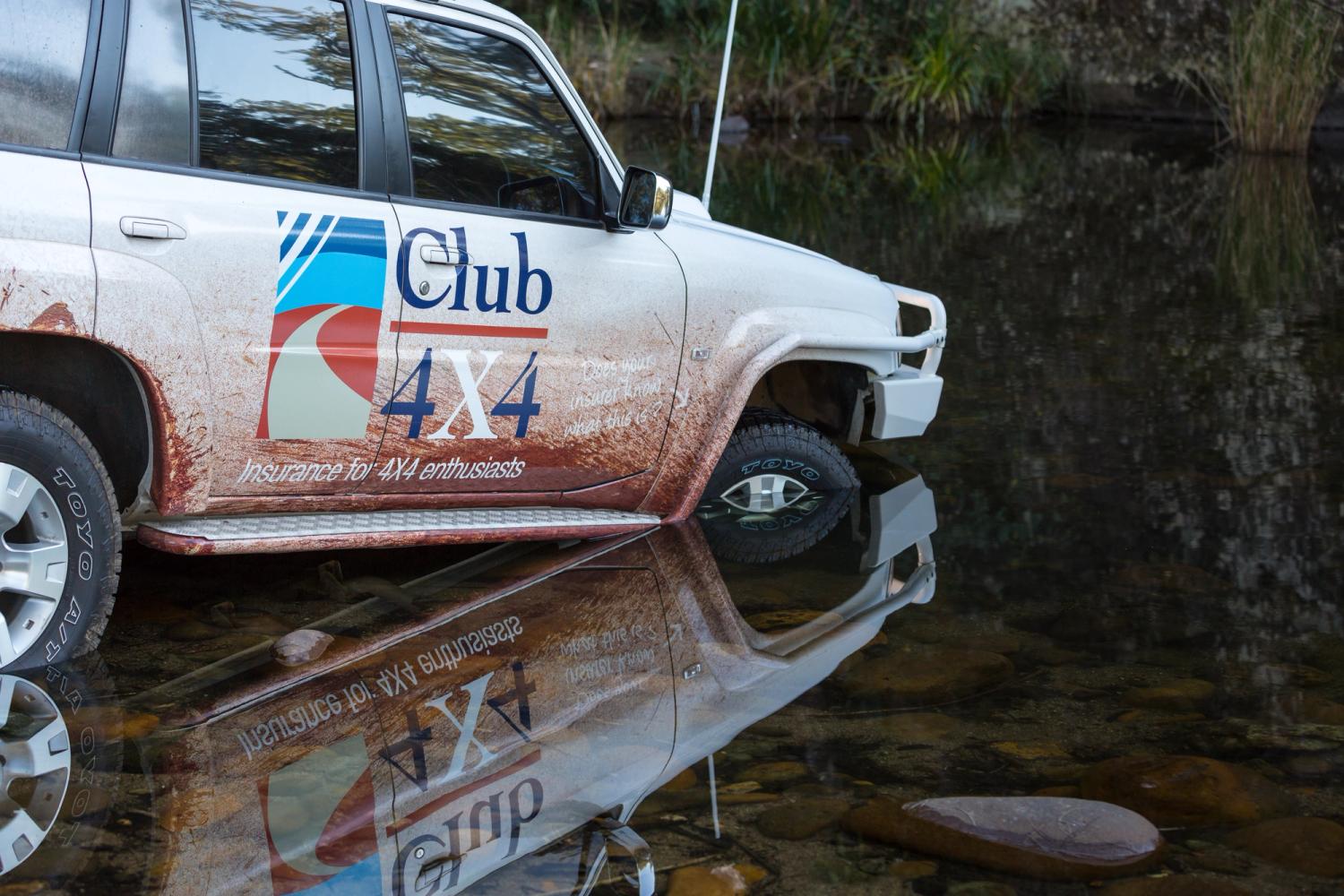As a company that protects the lifestyle of the Offroad Touring Enthusiast, our insurance will cover you if you happen to drown your car while attempting a crossing, but with a water damage excess and contribution payable, not to mention the inconvenience, it is simply much easier to just get it right in the first place.
The University of New South Wales proved that a GU Nissan Patrol will float in less than 1m of water, and was at significant risk of being washed away at this depth, even by slow moving water
We’ve compiled a list of tips to help you avoid breaking your Rig.
Understand the situation
Before traversing a river crossing, stop and take the time to assess the situation. You’ll want to know:
- How fast the water is moving
- How deep the water is
- What’s on the bottom (any holes, submerged rocks / logs etc)
- What the best route across is likely to be
- How you will need to prepare your rig
We’d recommend walking the crossing first, taking sticks and marking any key obstacles or holes. If you’re in the top end where there are crocodiles, this may not be possible though.
Your other option is to stop and use the opportunity to let the car cool down before the crossing while you have a break. If you are lucky, someone who has previously crossed may come through, or someone else might attempt it and you could watch how they go (it might even save you from getting wet)
Consider other options
The truth is that if you get a water crossing wrong and water gets into your engine, it’s going to be expensive. Our experience has shown that generally a vehicle that has water ingress has a high likelihood of being deemed a total loss; engine rebuilds alone can cost twenty or thirty thousands dollars alone.
Once you’ve assessed the crossing in front of you, you should also ask yourself the following questions:
- Do I need to do this crossing, or is there an alternate route?
- Is this the safest place to cross?
- Is the exit OK, and are there anchor points if I need to recover?
- Am I confident that I’ll get through here OK?
If in doubt, we recommend that you don’t attempt the crossing. Could you afford to be without your car while it gets repaired? How would you get home right now if the worst were to happen?
Prepare your vehicle
We’ve already mentioned that you should stop and let the vehicle cool, for two key reasons. Hot brakes and cold water don’t go well, and, hot diffs and transfer cases don’t like cold water either because the fast cooling causes contraction, which can suck in water into them.
We’d always recommend that you fit a water crossing cover, even if you make one out of a tarp. It will help create a bow wave and keep water away from your radiator fan, which can prevent it from being pushed into your radiator and causing a hole.
Have your winch or recovery straps ready and accessible in case you need to hook them up, and have a spot identified to recover from. This is especially important in water where your vehicle will be over the wheels.
Understand the wading depth of your vehicle, and know that your raised air intake is most likely not fully sealed, meaning that you still run the risk of water ingress unless you seal it .
Consider raising the breather hoses on your diffs and drive gear to help prevent any contraction from sucking in water.
Turn off any non-essential electronics, and do your best to waterproof any places water may be able to get into them.
Tackling the crossing
Once you’ve prepared, it’s time to get in and drive the crossing. The general recommendation here is low range, second gear. You don’t want to go too fast, but you also want to maintain momentum and create a small bow wave.
You should be about a brisk walking pace, which is slow enough to react to anything unexpected.
If you get stuck, the number one rule is to stay calm and collected – many situations are made from an incorrect reaction – so visualise what you might do should the worst happen. Having a plan can be the difference between success and failure. Ultimately, safety is the number one priority – if you’re unsure find another way around.
If you get hung up, carefully try to ease the rig back gently, and then try to drive around the rock or hole.
If the vehicle starts digging in and you are stuck, and if the water is anywhere close to the wading limit of the car, consider turning the engine off, grab the winch or recovery cable and start the process of dragging the vehicle out.
After Your Crossing
Once you’ve emerged from the water on the other side, stop if it is safe to do so, and let the excess water drain from the vehicle. Many people disregard this concept, but if you do, you’ll drag water up the exit and track, making it muddier and more difficult for the next person.
Do a quick check for anything that may have got caught under the vehicle during the crossing, and then move off, slowly squeezing the brakes on and off to help dry them out and get them working properly again.


